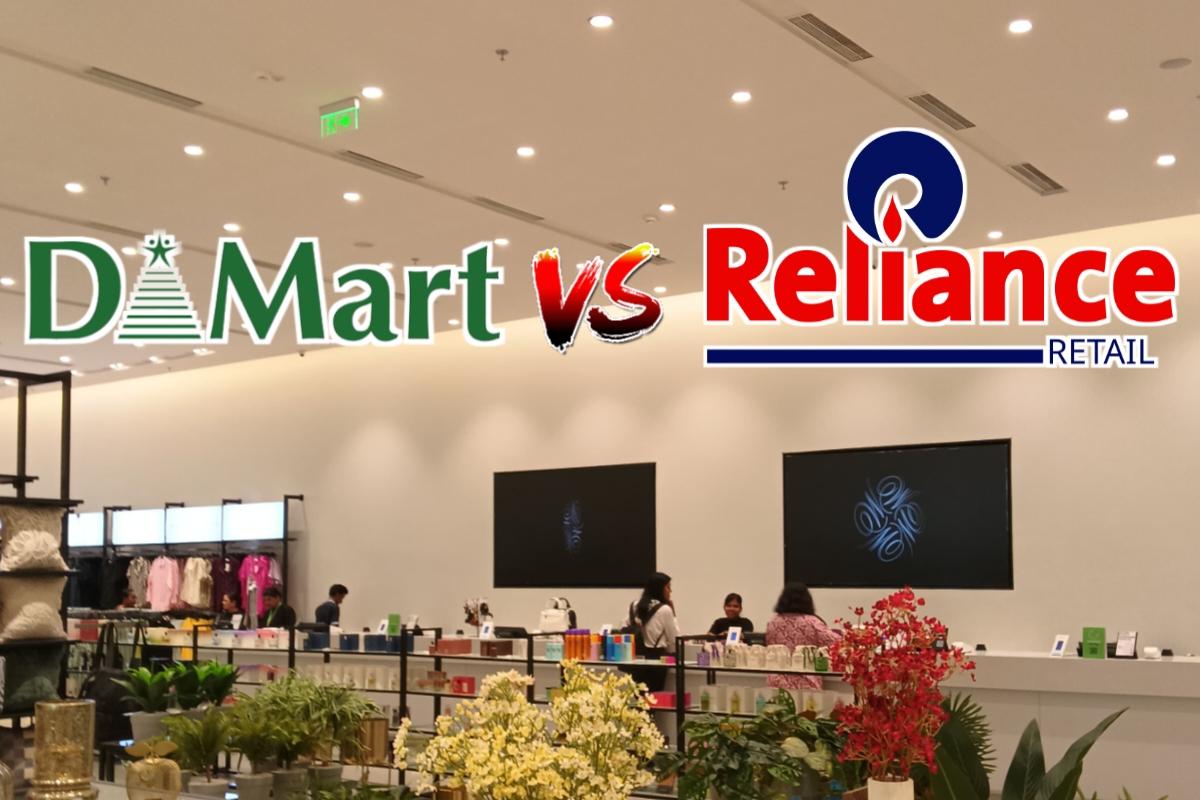
India’s retail sector witnessed strong earnings momentum in Q1FY26, with two of its largest players—Dmart and Reliance Retail—posting contrasting numbers in terms of profitability, scale, and operational efficiency. While Reliance Retail leads by size and revenue, Dmart continues to impress with its lean and efficient business model. Here's a quick look at who performed better and what these results tell us about their strategies.
Dmart, operated by Avenue Supermarts Ltd., reported a standalone net profit of Rs 830 crore in the first quarter of FY26, reflecting a modest growth of 2% from Rs 812 crore in the same period last year. Revenue from operations stood at Rs 15,932 crore, marking a 16% year-on-year increase.

During the quarter, Dmart expanded its presence by opening nine new stores, taking the total store count to 424 as of the end of June. The company acknowledged that despite strong revenue growth, margins faced pressure—primarily due to price corrections in non-food products and a competitive FMCG landscape. These factors collectively shaved off about 100 to 150 basis points from sales growth.
EBITDA performance also saw some headwinds. On a standalone basis, Dmart reported EBITDA of Rs 1,313 crore, up from Rs 1,221 crore in Q1FY25. However, the EBITDA margin slipped to 8.2% from 8.9% a year earlier. Consolidated EBITDA stood at Rs 1,299 crore, with a margin of 7.9%, compared to 8.7% last year. According to CEO and MD Neville Noronha, older stores (operational for two years and above) recorded a respectable 7.1% growth during the quarter.
In contrast, Reliance Retail posted far higher absolute numbers but with a significantly larger store network. The company reported a consolidated net profit of Rs 3,271 crore, representing a 28.3% year-on-year increase from Rs 2,549 crore in Q1FY25. Revenue rose to Rs 73,720 crore, up 11.3% YoY.
Reliance Retail added a staggering 388 new stores in the quarter, taking its total count to an industry-leading 19,592 stores. While this massive expansion showcases the scale and ambition of Mukesh Ambani's retail empire, it also comes with significant cost implications.
One key differentiator between the two companies lies in their business models. Dmart owns most of its stores, thereby eliminating rental expenses—a major cost-saving advantage. This ownership-driven strategy helps maintain better profitability despite a smaller store base and lower revenue compared to Reliance Retail.
On the other hand, Reliance Retail follows an asset-light approach and leases a large portion of its store properties. This means a notable share of its revenue is used for rental and operational costs, which, despite high revenue, impacts profitability per store. This distinction is clearly reflected in the comparison: Dmart, with just 424 stores, achieved a net profit of Rs 830 crore, while Reliance Retail, with nearly 20,000 stores, recorded Rs 3,271 crore in net profit.
Another advantage of Dmart is its preference for store locations outside the city center, which allows them to acquire land or rental space at significantly lower costs. In contrast, Reliance Retail focuses on prime, high-traffic locations in urban areas, leading to higher lease and operational expenses.
In terms of market valuation, the difference is even more stark. In August 2023, the Qatar Investment Authority invested $1 billion in Reliance Retail for a 0.99% stake, valuing the company at a whopping $100 billion, or approximately Rs 8.5 lakh crore. Meanwhile, Dmart’s market valuation as of July 2025 stands at around Rs 2.6 lakh crore.
While Reliance Retail dominates in size, scale, and diversification, Dmart continues to deliver strong returns with operational efficiency and a focused business model. The contrasting strategies of these two giants offer a compelling look into the diverse approaches shaping India’s dynamic retail landscape.
Disclaimer:This article is for informational purposes only and should not be considered as investment advice. Readers are advised to do their own research or consult a financial advisor before making any investment decisions. The information presented is based on publicly available data and company filings as of the date mentioned.




